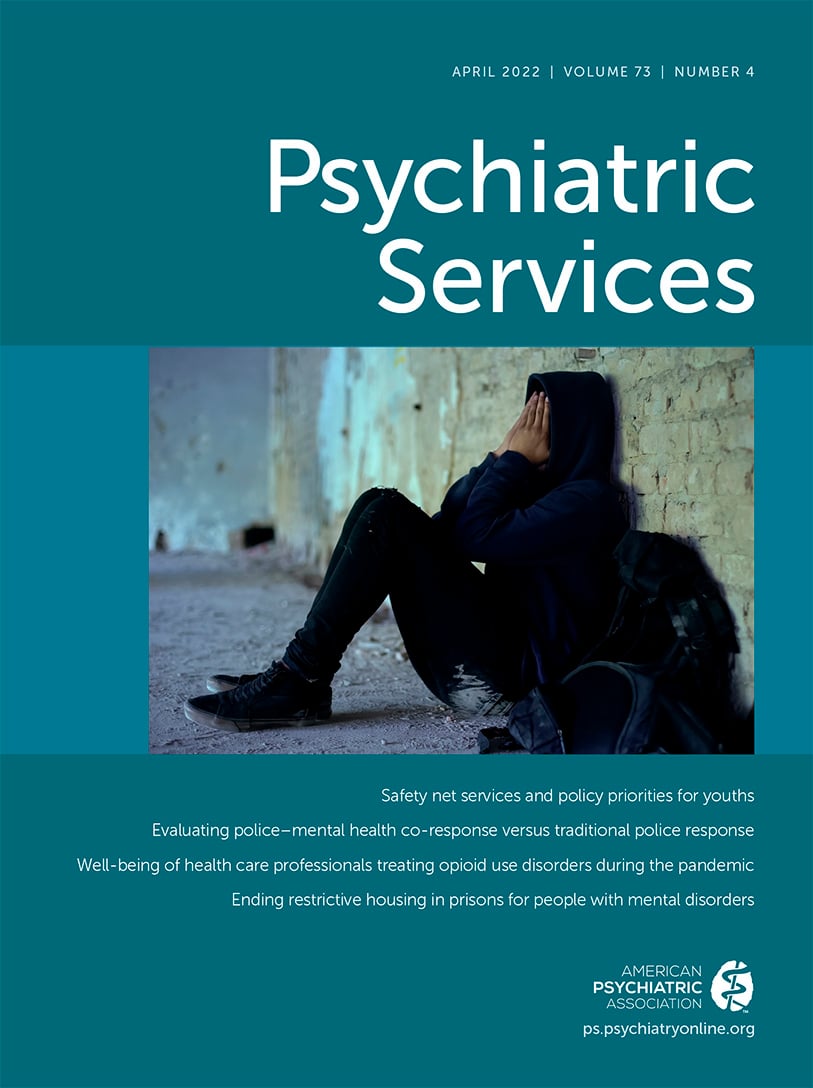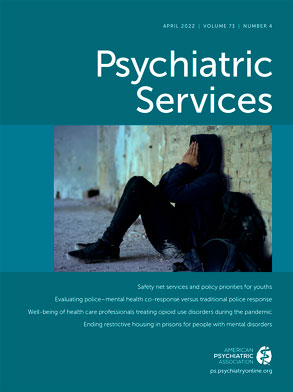PRISM
The PRISM program admits individuals who are currently experiencing homelessness (i.e., are unsheltered or using emergency shelters) or at an imminent risk for homelessness (e.g., after eviction, hospital discharge, or prison release) and who have significant support needs. Clients have to agree to receive services from the onsite team and to have program fees (CA$353 per month) deducted from their social assistance benefits if they are eligible to receive these benefits. They should also express a desire for housing. PRISM will often accept a client even after multiple failed housing attempts. No firm exclusion criteria exist because PRISM is often the service of last resort for individuals. Clients who present too high a risk for violence may first need to be stabilized in a hospital. All clients are notified from the outset that PRISM has a zero-tolerance policy regarding violence.
Presently, three PRISM facilities are located at different shelters in Montreal. People admitted to the program typically stay for 8–12 weeks. Each facility has eight to 16 beds and is located within a dedicated shelter dormitory that offers some privacy, big lockers, and a lounge with sofas and computers. Unlike other shelter users, PRISM clients are free to come and go as they please and have access to their bed at all times. All meals are provided. Clients have continuous access to the PRISM team throughout their stay. This setup creates an environment conducive to focusing on recovery objectives.
PRISM staff include a part-time psychiatrist, a part-time nurse, and a full-time social worker (or psychoeducator) employed by the publicly funded health care system. They function as an integrated treatment team, providing collaborative treatment, planning, and care. They meet clients jointly or individually as needed. A full-time case worker employed by the shelter completes the team. The psychiatrist conducts all evaluations onsite (generally within 72 hours of a client’s being admitted to the program), carries out a diagnostic workup, and develops a psychiatric treatment plan. The psychiatrist also provides follow-up throughout the client’s stay. The nurse carries out onsite health assessments, manages blood tests and medication (including injections), and ensures liaison with other medical teams.
The social worker develops an individualized treatment plan with clients, tailored to their needs, strengths, and objectives. The goal is, typically, to help clients find adequate permanent housing while ensuring that they receive appropriate ongoing care from other services ranging in intensity from an outpatient clinic to an assertive community treatment (ACT) team. The social worker accompanies clients to their first appointment with the new care team. Together with the shelter case manager, the social worker also helps clients with a wide variety of tasks according to their needs and objectives. This assistance may involve simple tasks such as looking for the contact information of a hairdresser with the client and accompanying them there, if needed, or resolving larger challenges such as legal or asylum-seeking problems. The social worker and the case manager also provide emotional support and guidance throughout the week. No structured common activities, such as group therapy, are offered. Weekly meetings allow team members to coordinate their efforts.
PRISM follows a harm-reduction approach to substance use, as do the shelters. It operates on the premise that substance use is common in the homeless population. However, substance use is prohibited onsite, and clients who arrive in an acute intoxicated state may be refused access to the shelter. PRISM rules must be congruent with the rules of the shelters hosting the program. Actions are taken to help clients decrease substance use through counseling, prescription medication, and referral to specialized services, including community-based (e.g., Alcoholics Anonymous) and institutional (e.g., out- or inpatient treatment) services.
PRISM relies on multiple partnerships. The most important of these partnerships is between a homeless shelter and the formal health and social services system. To set up and oversee a PRISM facility, representatives of a shelter and of the health and social services system create a “governance committee” that meets two or three times a year. The partners remain financially independent but can work together to secure funding. Today, PRISM involves ongoing partnerships with the five major nonprofit organizations that deliver Housing First services in Montreal: Old Brewery Mission (OBM), Welcome Hall Mission (WHM), Mission du Père, Accueil Bonneau, and Diogène. It collaborates with institutional sector ACT teams and several hospital psychiatry departments (usually for outpatient services but occasionally also for inpatient care). Because PRISM comprises a hospital-based team embedded in a community organization, it has access to primary care consultations in nearby primary health clinics. This approach meets a variety of needs, including pertaining to women’s health. Relations with numerous transitional housing providers are also crucial for organizing transfers to housing and support services.
PRISM also collaborates with organizations in the health and social services system involved with asylum seekers and refugees when mental health is an issue. The program relies on partnerships with social assistance officers to expedite reinstatement of social assistance benefits, with staff at other health care organizations to arrange for general health care, with housing authorities to find proper dwellings, and with the provincial government to obtain new public health insurance cards. Psychiatric crisis intervention outside regular working hours is provided in conjunction with shelter staff and a citywide mental emergency mobile team. Finally, PRISM establishes connections with a variety of community organizations, which address, for example, intimate partner violence. Care is enhanced through these various partnerships because it allows for easy access to other services providers, with whom it is possible to fast track or investigate linkages.
Assessing Effectiveness: A Descriptive Study
We conducted a chart review of all past users of three of the four PRISM facilities operating at the time of our study. We looked at the period from the opening date of the first PRISM facility on November 18, 2013, to May 31, 2019. The study was approved by the research ethics board of Centre intégré universitaire de santé et de services sociaux du Centre-Sud-de-l’Île-de-Montréal. Over the study period, 1,018 individuals were referred to the PRISM facilities, of whom 609 were admitted to a PRISM facility, 220 were ineligible for admission, and 189 declined admission (see
online supplement). We eliminated data from 17 individuals who were still at a facility on May 31, 2019, and from 13 who had missing data. In the end, 579 facility users remained in the study (165 women, mean age=47.5 years, and 414 men, mean age=42.4 years).
Most users (57% [N=329]) came directly from the street or shelters. Other users were referred by hospitals, emergency departments, or another clinical team. These latter referral pathways were the case for 151 (41%) of 364 men at OBM, 65 (39%) of 165 women at OBM, and 34 (68%) of 50 users at WHM, for a total of 250 (43%) of 579 users.
Of the 579 users included in the study, 63% (N=366) were housed when discharged from the PRISM facility (52% [N=303] in permanent housing, and 11% [N=63] in temporary settings), whereas 21% (N=122) were not housed (i.e., homeless or incarcerated) (see the
online supplement). In addition, 16% (N=91) were transferred to a hospital or rehabilitation services. At program discharge, 492 (85%) were referred to and engaged in some kind of outpatient or community services support (see
online supplement).
Discussion
PRISM is a shelter-based service that relies on ongoing partnerships with numerous providers within the public health and social services system. After a period of stabilization at a PRISM facility, more than half of the users (for the most part individuals experiencing homelessness and severe mental illness) were housed, usually in a permanent setting, with ongoing support provided by existing mental health services. Moreover, 85% of the users were referred to and engaged in one service or other.
PRISM builds on preexisting evidence-based interventions for individuals experiencing homelessness and severe mental illness to specifically address service gaps in Montreal. PRISM perhaps most closely resembles the Psychiatry Shelter Program. This mental health day treatment program was developed and created in New York City in the 1980s by a hospital psychiatry department in partnership with a homeless shelter for men experiencing homelessness (
1). The program was meant to prepare users over a period of about 5 months for community living or housing. However, the program was larger and less intensive than PRISM, and its evaluation did not allow for a direct comparison of outcomes (
1).
PRISM also resembles the Critical Time Intervention (CTI) in some respects. CTI was originally developed to supplement the Psychiatry Shelter Program (
2). Its aim was to strengthen the client’s social support network and to provide emotional and practical support over a 9-month transition period from various institutions (such as hospitals, shelters, or others) to community housing (
2,
3). Likewise, PRISM seeks to support individuals experiencing the transition from homelessness to community housing. However, although CTI entails meetings with clients while they are still in an institutional setting (e.g., hospital, shelter, prison), the core of its interventions take place after they have transferred to the community. In contrast, daily formal and informal PRISM interventions occur while clients are in the PRISM shelter-based living environment and end soon after they connect with a new care team in the community.
PRISM also resembles ACT (
4) because it applies a team-based approach to providing comprehensive care to people with severe mental illness. However, PRISM is much more time limited and is delivered in a residential setting. It also bears some similarity to Housing First, a program in which an ACT (or case management) team offers support together with immediate access to permanent housing, usually with the help of rent supplements (
5). Both programs seek to help people with mental illness who have been experiencing homelessness to regain permanent housing. However, PRISM affords them a period of stabilization in a shelter for a few months during which their strengths, needs, and housing- and service-related preferences can be carefully ascertained. Once stabilized, users can then transition to community housing and best-fit support.
PRISM can be conceived as a hospitalization in the community, replacing psychiatric hospitalization or decreasing length of stay. Discussions with the clinical teams revealed that many individuals referred from the emergency department or coming from the street may have needed hospitalization stays without PRISM. Furthermore, hospitalization duration may be reduced when clients are discharged to PRISM from an acute psychiatric care ward. PRISM provides a setting for inpatient care that is more familiar to clients, has a less regimented approach, and costs less than a typical hospital psychiatric ward. Moreover, a psychiatrist is available on short notice, and staff are present at all times (PRISM staff during working hours and shelter staff the rest of the time). For about 15% of clients, the stay at a PRISM facility reveals the need for inpatient or rehabilitation care. In all cases, PRISM enables identification of the best available option for clients after or during a period of psychiatric stabilization.
One limitation of our study was that although we described the type of living arrangements that clients had obtained at time of discharge from PRISM, we did not ascertain subsequent housing stability. The extent to which clients can obtain and maintain permanent housing after staying at a PRISM facility is the subject of an ongoing observational study. Further studies are being planned through partnerships with WHM and the Jewish General Hospital with which the first author is affiliated.

